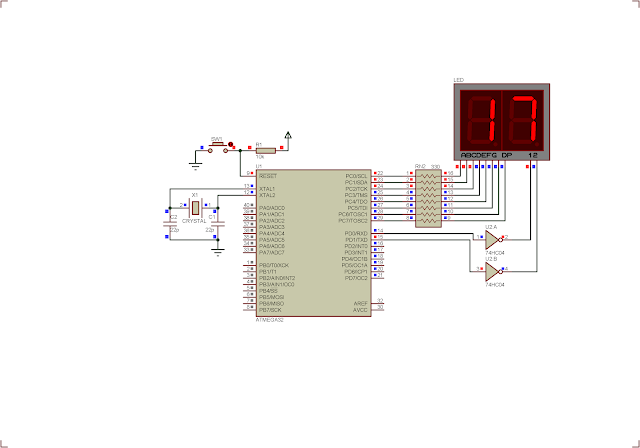In previous post, I made a simple multiplexing display example using a two-digit SSD. In this example, I gonna make a free running timer two a two-digit multiplexing seven-segment display. It will start counting from 0 to 999 seconds before it reset by itself.
 |
| Program simulation |
The display is driven by delay function. Each digits are activated for only 5ms. I use Timer/Counter 0 to create timing tick.
The CPU clock is 4MHz. Clock period is,
1/4000000MHz = 250 nano seconds, or 0.00000025 second.
Timer 0 prescaler is Fosc/1024. So its Timer/Counter 0 period is,
0.00000025 second * 1024 = 256 micro seconds, or 0.000256 second.
The 8-bit TCNT0 register can store counting value up to 256. So the TOV0 occurs every,
256*0.000256 second = 0.065536 second.
To get a one second timing, I need to make a calculation of one second count. That is,
1 second count = (1 second)/(0.065536 second) = 15 counts.
Finally after the 15 counts, I will get a one-second time. Then I will need to reset the counter variable.
Click here to download its source file.
 |
| Schematic Diagram |
No comments:
Post a Comment